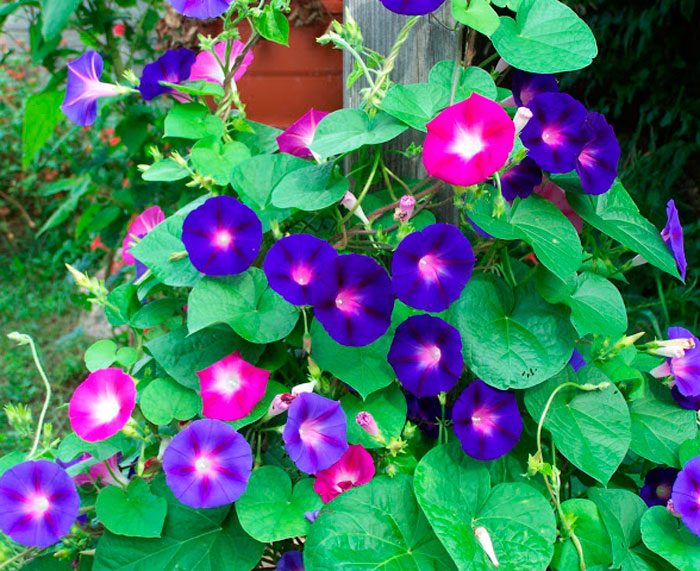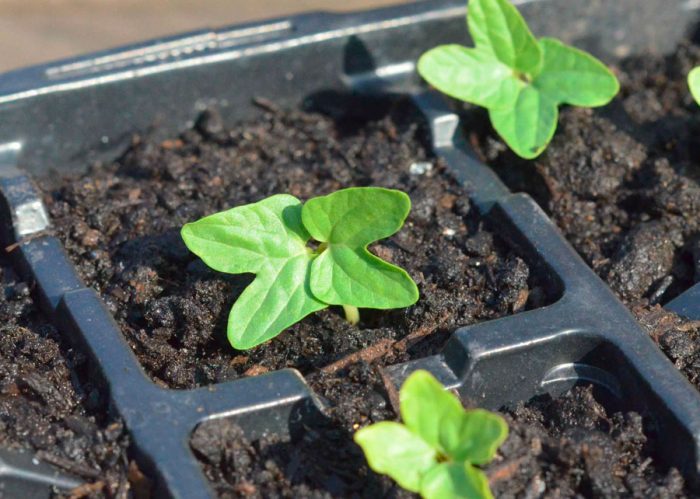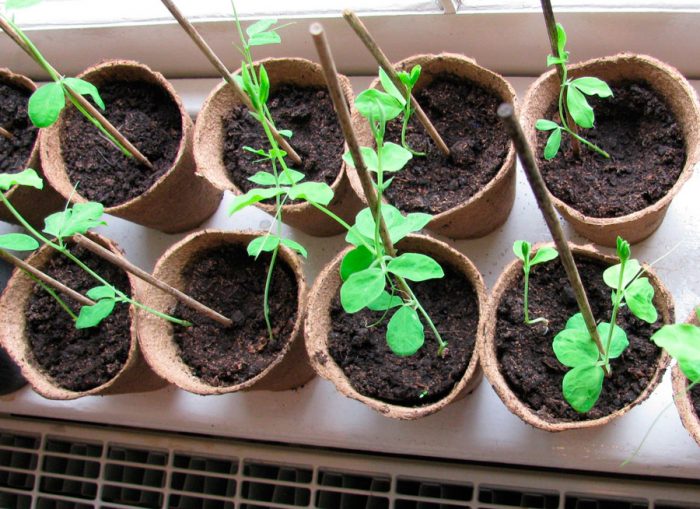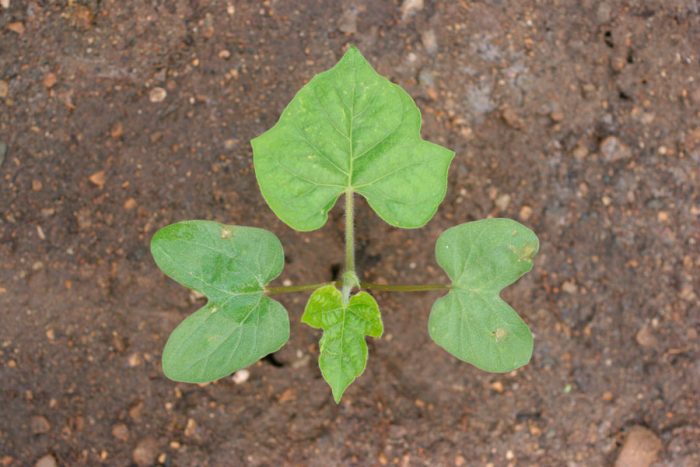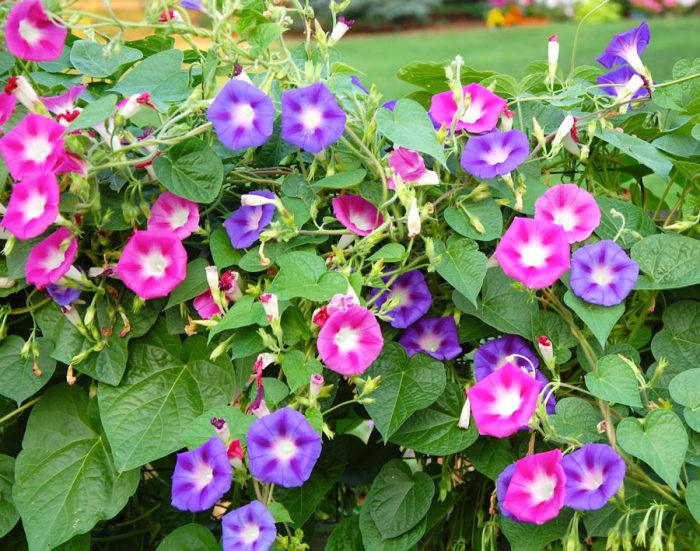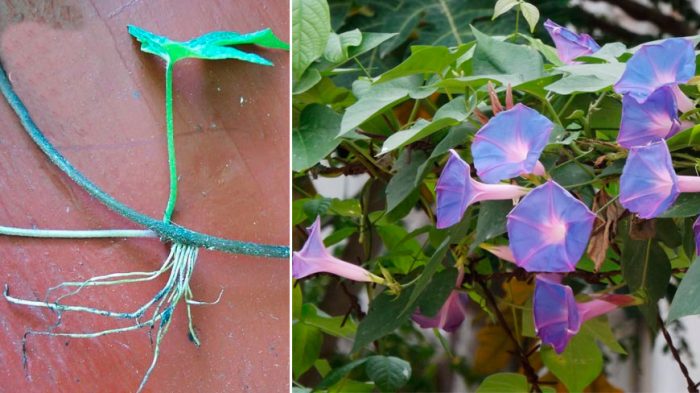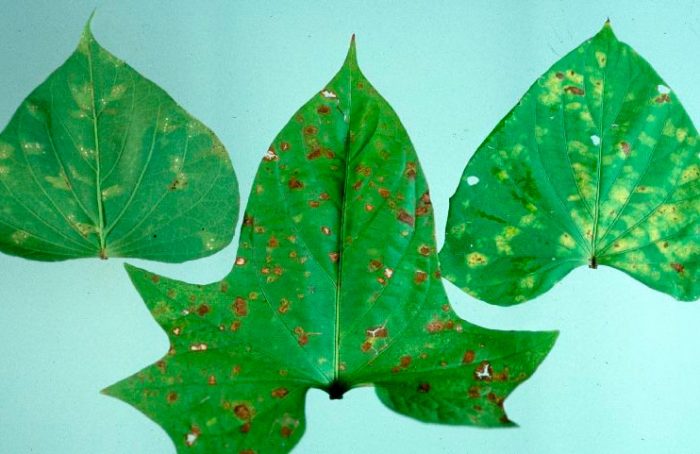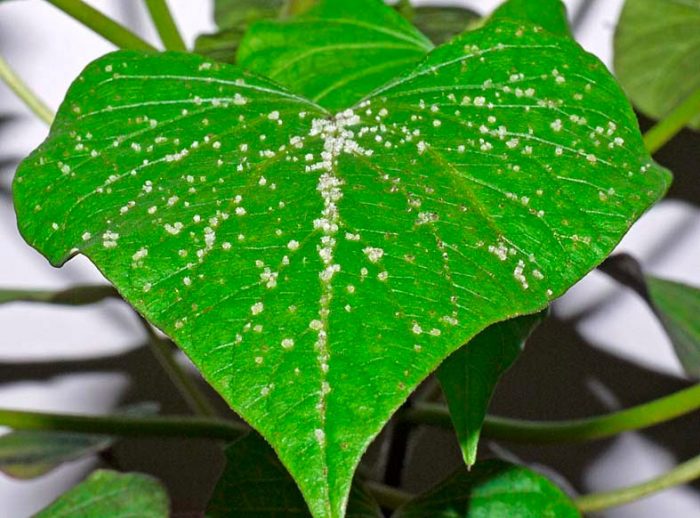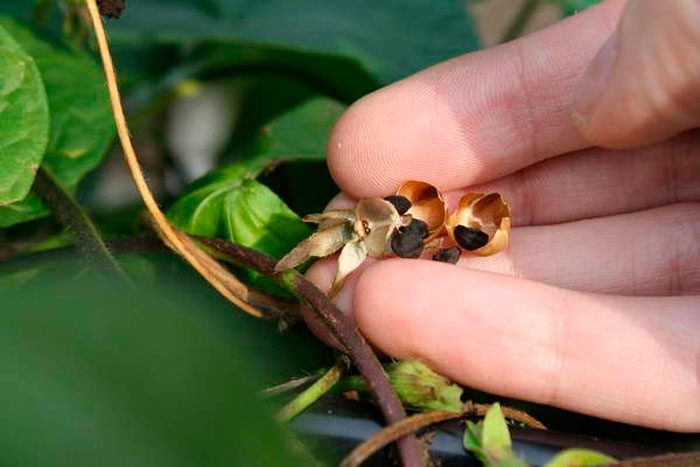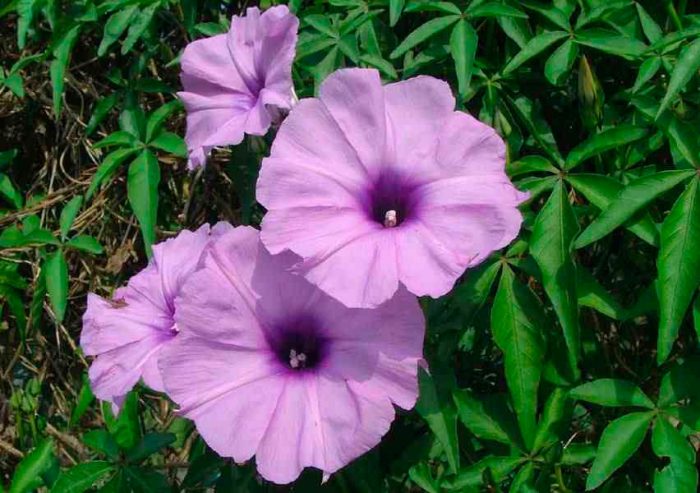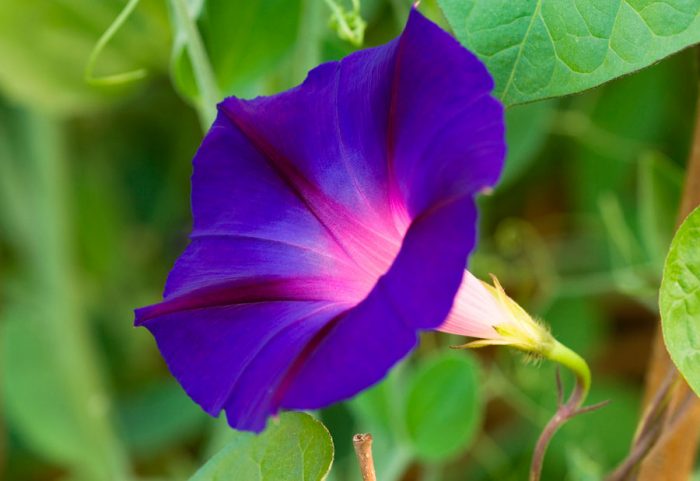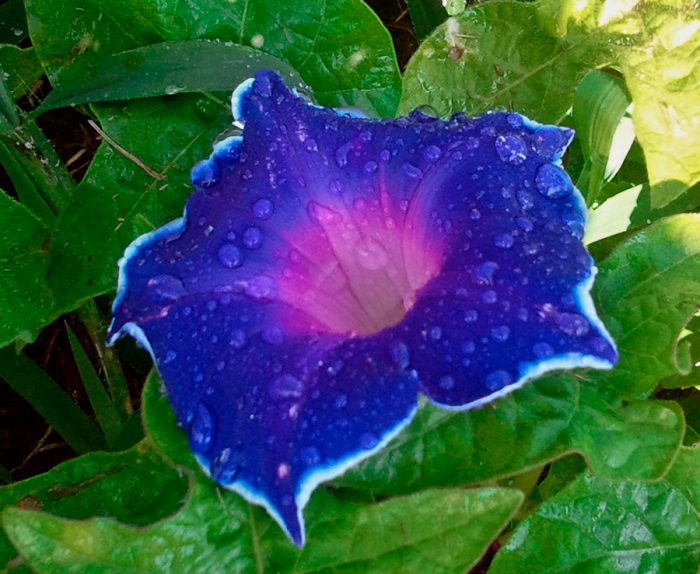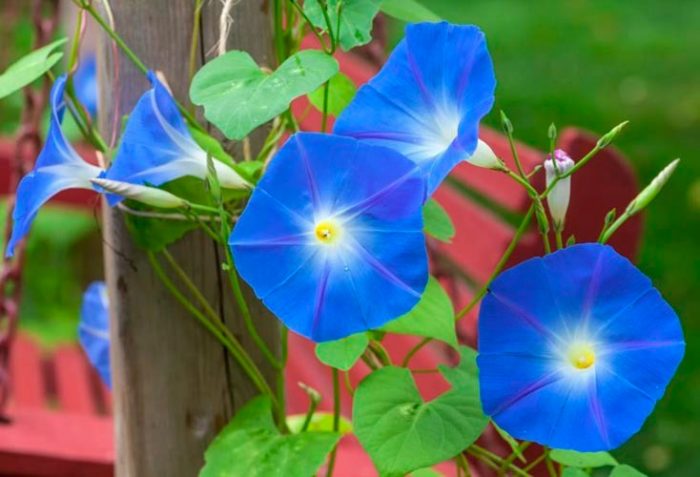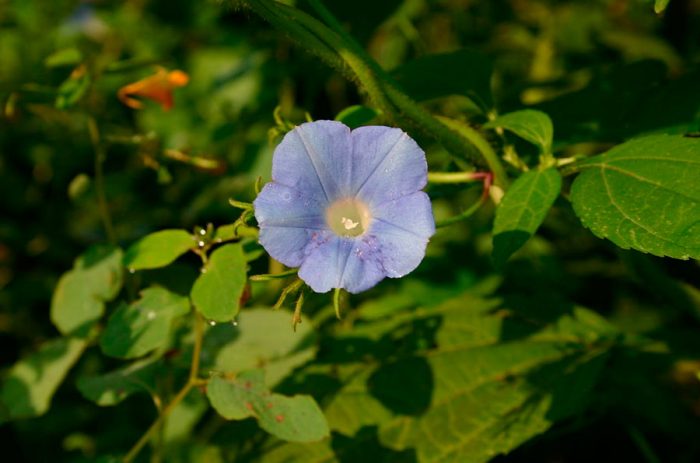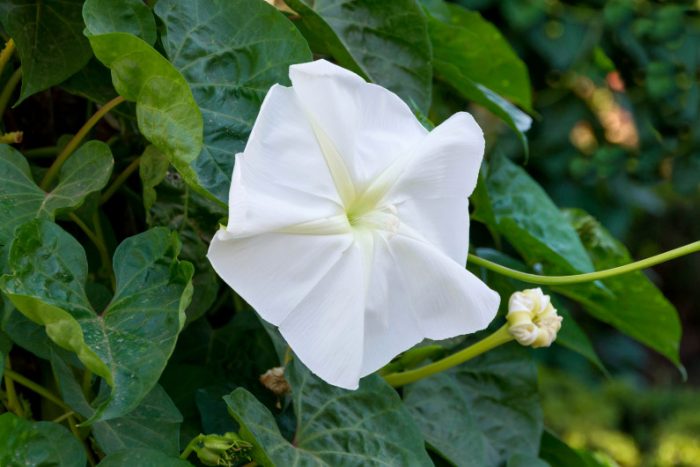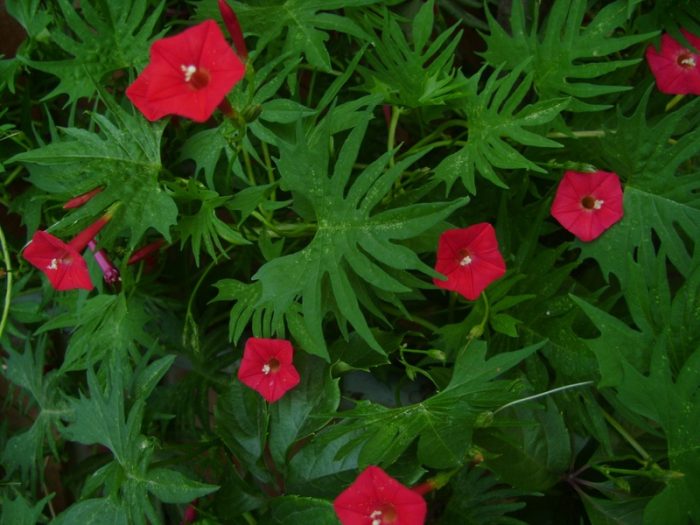The flowering plant Ipomoea (Ipomoea) is the most abundant genus of the Bindweed family. This genus unites more than 500 species. These plants are found in natural conditions in various regions with a subtropical or tropical climate. Morning glory is represented by trees, shrubs and lianas, which can be perennials and annuals. Among the various species of this genus, there are also food ones, for example: aquatic spinach and sweet potatoes. The name of this genus comes from 2 Greek words: "ips", which translates as "worm" and "homoios" - "similar", the result is "worm-like", this definition is associated with the rhizome of perennial species of morning glory. Florists grow vines belonging to this genus, the opening of their flowers occurs in the early morning, while all other flowers are still closed, so the morning glory was nicknamed "the flower of the morning dawn." Interestingly, weed bindweed and morning glory are close relatives.
Content
- 1 Features of morning glory
- 2 Growing morning glory from seeds
- 3 Planting Ipomoea in open ground
- 4 Ipomoea care
- 5 Ipomoea pests and diseases
- 6 How to collect morning glory seeds
- 7 Morning glory in winter
- 8 Types and varieties of morning glory with photos and names
- 8.1 Ipomoea cairica (Ipomoea cairica)
- 8.2 Ipomoea purpurea (Ipomoea purpurea)
- 8.3 Ipomoea Nil (Ipomoea nil, Ipomoea Іmperialis), or in Japanese asagao (morning face)
- 8.4 Ipomoea tricolor (Ipomoea tricolor), or red-blue morning glory (Ipomoea rubro-caerulea)
- 8.5 Ipomoea ivy (Ipomoea hederacea)
- 8.6 Moonflower morning glory (Ipomoea noctiflora)
- 8.7 Kvamoklit
Features of morning glory
Ipomoea, grown in garden plots of middle latitudes, is a garden morning glory, a liana about 5 m long. Heart-shaped shoots are densely leafy. The large flowers are very fragrant and have long stalks. The shoots are densely covered with flowers that open early in the morning and turn to follow the sun. Their closure is observed at noon, but if the day turned out to be cloudy, then this can happen only in the evening. Double or simple flowers have a shape similar to a gramophone pipe, they can be painted in a variety of colors, for example: red, blue, white, pink, etc. Flowering begins in the first summer weeks and ends with the onset of frost. Under natural conditions, such a vine is a perennial, but in the middle latitudes it is cultivated as an annual plant.
Growing morning glory from seeds
Sowing
For reproduction of morning glory, the generative (seed) method is used.The seeds of this vine remain viable for 3-4 years. Seeds are sown for seedlings in mid-May, but before that they should be subjected to scarification (to break the integrity of the shell), instead they can be placed in tepid (from 25 to 30 degrees) water to swell for 24 hours. In the case when no swelling of the seeds is observed , it is necessary to carefully pierce their shell with a needle, after which the seed is soaked again.
It is imperative to take into account that each species requires a certain soil mixture, and this is the main difficulty in growing morning glory. For sowing African species, you need to use a soil mixture intended for succulent plants, into which small expanded clay should be added. For sowing seeds of American varieties, you need to use a substrate consisting of peat, coconut fiber, leaf humus, vermiculite and fine expanded clay (2: 2: 4: 2: 1).
Small cups need to be filled with a suitable substrate, after which 2-4 seeds are placed in them, cover the top of the container with film or glass, as a result, a kind of mini-greenhouse will be obtained. If necessary, water the crops, arrange for them regular ventilation, remove condensate from the shelter, and also maintain the air temperature within 18-20 degrees. If everything is done correctly, then the first seedlings should appear after 10-12 days.


Watch this video on YouTube
Seedling care
After the seedlings reach a height of 15 centimeters, a lace will need to be tied to their base, its other end should be pulled up and fixed in this position. The resulting guide will become a support for the growing plant. As the seedlings grow, they need to be transplanted 1 or 2 times into a larger container using the transfer method, but be careful, as the root system should not be exposed or injured. Pinching the plants will allow them to grow more side shoots.
Planting Ipomoea in open ground
What time to plant
Planting mature morning glory seedlings in open soil should be done in the last days of May or the first in June. This should be done after the soil is well warmed up, and the threat of recurrent spring frosts is left behind.
Seedling planting rules
For planting young plants in open ground, the transshipment method is used. A distance of 20 centimeters must be kept between the bushes. After planting over the plants, it is necessary to install a support, for example, you can stretch the fishing line or use a lattice of twigs.
Sowing seeds can be done directly into open soil. Sowing is carried out in the last days of May, after the threat of return frosts has passed. For planting, you must choose a calm and well-lit area. This vine grows best on weakly acidic, well-drained soil.
When cultivating such a plant, it is important to remember that all parts of it contain a large amount of poison. In this regard, this liana should be grown only on the street.
Ipomoea care
Watering
Watering morning glory should be systematic, but moderate. Do not allow liquid to stagnate in the root system of the plant. In May-August, these flowers should be watered regularly, and there is no need to wait until the topsoil dries up.
Top dressing
Liana is fed during the period of intensive growth once every 15–20 days. For this, fertilizers are used for cacti or for decorative flowering plants. But remember, if you overfeed the morning glory, especially with fertilizers containing nitrogen, this will positively affect the growth of foliage, but extremely negatively on flowering. In this regard, the liana should be fed in moderation. The fertilizer concentration should be the same as that used for indoor flowers.
Pruning
Sometimes the vine needs pruning. So, you need to cut out all injured or diseased shoots.Pruning is recommended in September, which will allow the morning glory to be put in order before wintering. In spring, the bushes should be thinned out, while each of them should have no more than 3 shoots. There are times when such a vine needs thinning during the growing season.
Ipomoea propagation by cuttings
There are types of this liana, for which cuttings are used for reproduction. For example, this method is propagated by the sweet potato morning glory. Cut off several stems of morning glory and cut cuttings from them, while keeping in mind that they should have 2 internodes, and they should be 15 to 20 centimeters long. The lower cut at the cutting should be done at an angle of 45 degrees, 1.5 cm below the knot. All leaf plates must be cut off from the bottom of the cuttings, after which they must be put into water. The roots should grow already for 3-5 days, after which it is recommended to immediately plant the cuttings in the soil. Liana grows warm (20 to 25 degrees). In the substrate, morning glory takes root completely within 7 days. Approximate timing of rooting cuttings:
- green cuttings - in March or April;
- semi-lignified or green cuttings - summer.


Watch this video on YouTube
Ipomoea pests and diseases
Diseases
Morning glory can get sick with fungal diseases, for example: anthracnose, white rust and various types of rot - root, stem, black, soft; viral diseases (there are about 20 different viruses); as well as physiological disease - white edema.
The defeat of vines by fungal diseases most often occurs through the soil, especially if liquid constantly stagnates in it. Plants affected by such diseases can be cured; for this, rotten places should be cut out, and the bush itself should be sprayed with a fungicidal preparation. However, root, soft and stem rot are considered incurable, in this regard, diseased bushes must be dug up and destroyed. An effective cure has not yet been found for viral diseases, so sick vines must also be dug up and burned. White edema is a non-infectious disease; it affects only those vines that have grown at home or in a greenhouse. The development of such a disease is observed with very frequent watering, excessively low temperature and high humidity. In diseased plants, cones and blisters form on the leaf plates, painted in green or light yellow, which eventually changes to brown. After that, the foliage turns yellow and flies around. In order to prevent such a disease, you should adhere to the rules of agricultural technology of this culture.
Pests
The greatest danger to morning glory is posed by such harmful insects as aphids and spider mites. If there are few pests, then you can try to eliminate them with gentle methods. To exterminate aphids, the bush is sprayed with soapy water, while spider mites can be removed with cold water. If there are a lot of insects, then the bush will need to be sprayed with a systemic insecticide, for example: Karbofos, Aktellik, Akarin or Fitoverm.
How to collect morning glory seeds
What time to collect seeds
Experts advise to collect seeds from the second and third bud. After the flowers wither, a brown box is formed in their place, wait until it dries and opens a little. This usually happens after 4 weeks. Pour the seeds into a paper bag with the name of the variety on it. The seeds remain viable for 3-4 years.
Morning glory in winter
In the middle latitudes, morning glory is cultivated as an annual plant. In this regard, in the autumn, after flying around the foliage, shoots can be cut off, and the site should be digged, do not forget to select and destroy all rhizomes. In the springtime, sow the seeds again and you will have a spectacular vine again.It should also be borne in mind that morning glory reproduces well by self-seeding, therefore there is a high probability that in the place where it grew, friendly shoots of this vine will appear in spring.
Types and varieties of morning glory with photos and names
As mentioned above, there are more than 500 species of morning glory, but only 25 of them are cultivated by gardeners. The ones that are most popular will be described below.
Ipomoea cairica (Ipomoea cairica)
The homeland of this species is Australia and Asia. The stems of this plant can be up to 5 meters long. It blooms very profusely with blue flowers. During flowering, this morning glory looks like a carpet. The palm-shaped lobed leaf plates are carved.
Ipomoea purpurea (Ipomoea purpurea)
This vine is an annual. There is pubescence on the surface of the shoots, their length can reach 8 meters. Opposite bare leaf plates can be lanceolate or oval. The length of single gramophone flowers is about 70 mm; they can be painted in dark purple, blue, pink, red, purple or white. There are varieties with a variegated color or with double flowers. This species comes from the tropics of America. There are varieties: Starfish, Scarlett O'Hara, Nochka, Giselle.
Ipomoea Nil (Ipomoea nil, Ipomoea Іmperialis), or in Japanese asagao (morning face)
This highly branching vine is an annual, it can be up to three meters long. Opposite large leaves have a wide-oval shape, dark green color and long petioles. The funnel-shaped flowers reach 10 centimeters in diameter, they can be painted in dark or light blue, purple, red or pink. Flowering begins in mid-summer and lasts until October. Varieties:
- Pikoti - semi-double flowers have a red or blue color and a white edging;
- hybrid Serenade - corrugated double flowers reach 80 mm in diameter, they are painted in lilac or dark red.
Ipomoea tricolor (Ipomoea tricolor), or red-blue morning glory (Ipomoea rubro-caerulea)
The homeland of this species is the tropics of America. This perennial plant is cultivated in mid-latitudes as an annual. Shoots are about 4–5 meters long. Opposite long-petiolate large leaf plates are heart-shaped, wrinkled and glabrous. The flowers are funnel-shaped, reaching 80–100 mm in diameter, collected in bunches of 3 or 4 pieces. The flowers are light blue in color, while the tube is white in color, but after they fade, they acquire a purple-pink hue. Flowering begins in the first days of June and ends with the first frost. Some varieties differ in that they include psychotropic substances that are used in medicine. The following varieties are popular with gardeners: Pink Lollipop, Blue Star, Sky Blue and Flying Saucer.
Ipomoea ivy (Ipomoea hederacea)
The homeland of this annual liana is the tropics of America. Branched stem is 2 to 3 meters long. Large leaf plates have a three-lobed heart-shaped shape, they are similar to ivy foliage. The shape of the flowers is funnel-shaped, they reach about 50 mm in diameter. As a rule, they are painted in sky blue, they are also found with white edging, and they can also be painted in burgundy, red and pink. On a long peduncle there are 2 or 3 flowers. Flowering begins in July and lasts until the second half of the autumn period. There is a variety Roman Candy: leaf plates have a variegated green-white color, it can be cultivated as an ampelous plant.
Moonflower morning glory (Ipomoea noctiflora)
The homeland of this species is also the American tropics. The stems are about 3 meters long, and the shoots are up to 6 meters long. Large leaf plates are heart-shaped.Fragrant white flowers, reaching about 10 centimeters across, they open at night, and their closure is observed with the first rays of the sun. Not all gardeners know about this feature, so some of them complain that their vine does not bloom. However, on a cloudy day, the flowers close only in the late afternoon and in this case it becomes possible to enjoy their extraordinary beauty. Flowering begins in July or August and ends in October.
Kvamoklit
This morning glory has carved openwork leaf plates and small tubular flowers. The most popular varieties are: feathery quamoclite (Quamoclit pennata), Slaughter's quamoclite, or cardinal liana (Quamoclit x sloteri), fiery red quamoclite (Quamoclit coccinea) and lobular quamoclite (Quamoclit lobata).
In addition to these species, among gardeners, the following are somewhat less popular: palmate, lobed, Brazilian, Moorish, etc.

